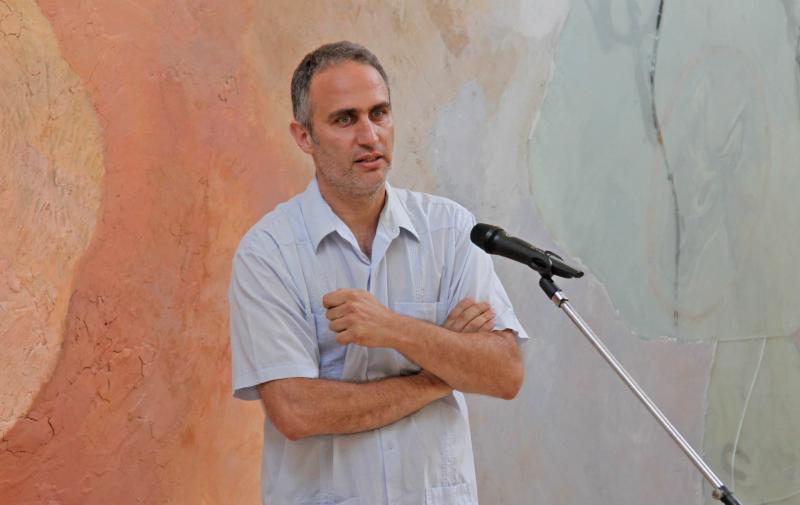Jaume Pitarch
Five mysteries
Time can not be stopped. Those who feel overwhelmed by its progress say it is inexorable. Those who aspire to wisdom use various meditation strategies that stretch or deny it. In the day to day, mortals do not ask ourselves questions and we are throwing away. Among these options, it is possible to celebrate and highlight its ambivalent essence thanks to a side approach, unusual: the paradox, which creates an interruption, a short circuit in thought and in the routines of consciousness. It is a brief lapse, like the illuminating metaphor of surrealist poets, that takes us into the unsolvable nature of the fundamental questions about being and the world, among which time seems perhaps the first.
Much of Jaume Pitarch's work deals, with surprise and absurdity, with the various forms of time, and tries not to trap it, but to let it manifest, to appear subtly. If in some of his works the balance seemed a way to fix time and space, with Five mysteries (a rosary that circulates in a machine-architecture toy), the capricious dynamism, produced in a closed circuit, seems to refer to the continuity and change, the advancement of time. It brings together entertainment, the playful distraction that separates us from time with the spiritual concentration of prayer. Monotony and amusement, the child's game and the melancholy of the old man, are reunited in a hypnotic architecture.
The problem of uninterrupted movement, generated by a kind of internal reason made of regularity and slight sequential changes, evokes an art that is made in time: music. I propose two possible soundtracks for the piece by Pitarch that raise questions about rhythm, monotony and its variation, about change and form, about repetition and its strange beauty. One could be the Mouvements perpetuels (1918), by Francis Poulenc, who reinterpreted the tradition of perpetuum mobile musical and grafted it into a kind of mechanical irony, between cubist and dadaist, akin to Marcel Duchamp. Another could be Six pianos (1973), by Steve Reich, with its minimalist reduction of the melody and the compositional structure based on the regulation of repetition. These musics, like Pitarch's piece, have in common a curious camaraderie with the traditional, mechanical clock, with its ticking now disappeared that we still associate with the passage of time and which we think of as the result of a small and hidden engineering of a convoluted logic that turns its labyrinthine displacements into the pattern of repeated instants that we link to the notion of time. Pitarch's piece is a bit all of it: a sculpture, a logical diagram, a rhythmic machine, a futility and a question.
Alex Mitrani



